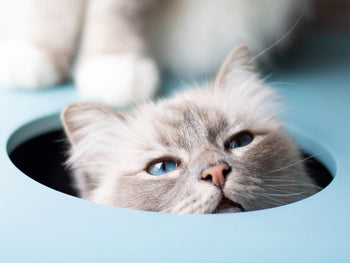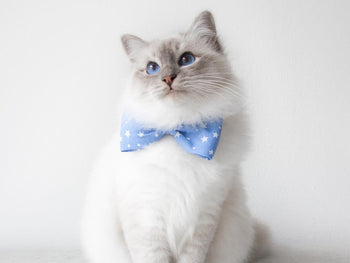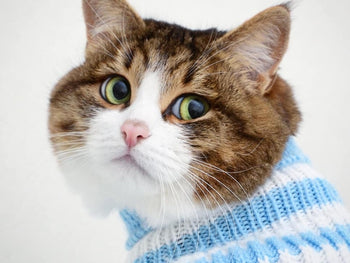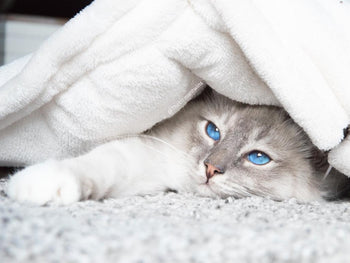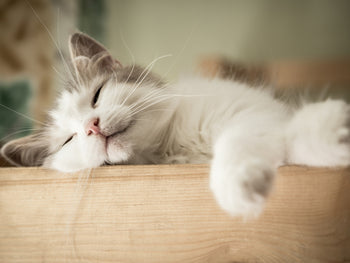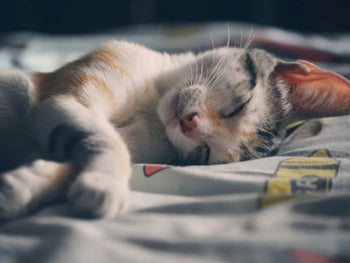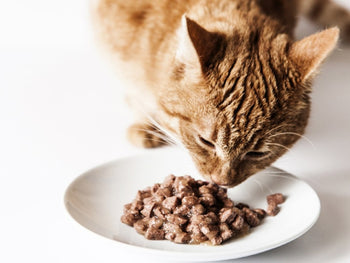
Of course, cats could not speak but they still have a lot of ways to convey messages using specific gestures. As a result, if pet owners want to better understand their fluffy friends, it's necessary for them to grasp the behaviors of the felines. Among the body parts of cats, the tail happens to be the one that the pets commonly use to express emotions in virtually every situation. That being said, novice cat parents tend to have difficulty extracting information from the movement of the cat's tail, especially when it comes to cat wagging tail while purring.
Want to know more about the behavior including potential causes as well as proper responses? If that is so, you must take a close look at the information down below.
The Cat's Tail: What Is Its True Purpose Anyway

Before we get to the subject of cat wagging tail while purring, it's wise to talk a bit about the cat's tail itself. At first glance, the tail seems to have nothing exceptional but it nonetheless plays a very important role in the daily life of the felines.
Numerous animals on the planet have tails, some use the tail to swipe insect, some use the tail to grip,... In the case of cats, the tail helps them maintain balance as they move around. Similar to other mammals, the tail of the felines is an extension of the spine which consists of multiple vertebras. Such a composition permits the cats to manipulate their tail as they like: bend, curve,... Besides keeping the body balance, the tail also enables the pets to send out signals to fellow cats, people and so on in the vicinity.
Hence, it's safe to say that by mastering the meaning behind the movement of the cat's tail, you would be able to tell just what your pet is thinking.
Check us out for further detailed cats' health guide!
Why A Cat Wag Its Tail In Addition To Purring

Generally speaking, the majority of cats wag their tail once they feel a bit annoyed. That means you should stop what you are doing immediately. However, most felines tend to purr if they are happy. As a result, some people don't how to react cat wagging tail while purring. Well, it's quite simple: The pet is receiving excessive stimulation which leads to a steady build-up of irritation. In the case the pet owners fail to catch the hint, the cats may resort to physical measures like bunny kicking, gentle biting.. as warnings.
Most of the time, cats enjoy hanging around human but it's critical that you always take the feeling of your pet into account. Regarding cat wagging tail while purring, it's strongly recommended that you adjust your petting method once that takes place. If possible, consider preparing a stuffed toy on hand in order to let the feline vent its frustration before continuing. Want to play it safe? Then it's a good idea to just leave your pet alone for some time to allow the overstimulation to subside all the way.
In conclusion, a cat shall wag its tail in the middle of purring to indicate that it's feeling good but you might want to tone things down a bit. As long as you apply appropriate changes to the way you pet it then the pet would still remain around. On the other hand, if you keep delivering more and more stimulation, the cat is going to put up resistance. Therefore, the ideal approach to the issues is thorough observation as well as timely adjustment.
Interpretation Of Other Common Movements Of The Cat's Tail

-
The Quiver
When cats want to show their affection to their owner, they may hold their tail in a mostly vertical position with the tip slightly quivering. From the outlook, it seems like your pet is attempting to mimic a rattlesnake. A cat that quivers its tail tends to be in a good mood which usually accompanies purring, vocalizations and others. In case you have time to spare, you should return the sentiment by cuddling your feline pal a bit.
-
The Swish
Cats that violently thrash their tail back and forth want to left alone so it's wise for the pet owners to leave them be. If the tail swishes from left to right at slow speeds then the pets feel mildly annoyed for some reasons. Overall, cats swish their tail in order to express displeasure which is precisely why it's necessary to refrain from disturbing them at such times. Similar to ordinary humans, most cats don't want people to bother them while they are in a bad mood.
-
The Twitch
The average cats lightly twitch their tail because of two things: first, it's upset and second, it's concentrating on prey like birds, rodents,... Depending on the ears, eyes and alike, you could determine what is going in the mind of your fluffy friend if it twitches its tail. Nonetheless, cats that have twitchy tail often wish to be left as they are so you must give them space.
-
The Flick
It's common knowledge that cats simply do whatever they want on their own terms. When something suddenly comes up, the felines shall casually decide if they should focus their attention on that particular development. For instance, if you notice your cat is sleeping and you call its name, one of the responses you might receive is a flicking tail. Essentially, such behavior means: "Yes, I heard you the first time but I just choose to ignore your call". Nonetheless, the fact that the cat flicking its tail is a rather good sign because your pet trusts you enough to sleep with you around.
-
The Concave
After a long day, cats would lie down while concaving its tail around the body. Naturally, it indicates that your pet is having a rest now so resist the temptation to pet the furry ball. Humans also need to get some shut-eye to revitalize ourselves at the end of the day and the same could be said about cats.
Looking for more interesting Cat Tips & Facts? Visit Cattybox !
